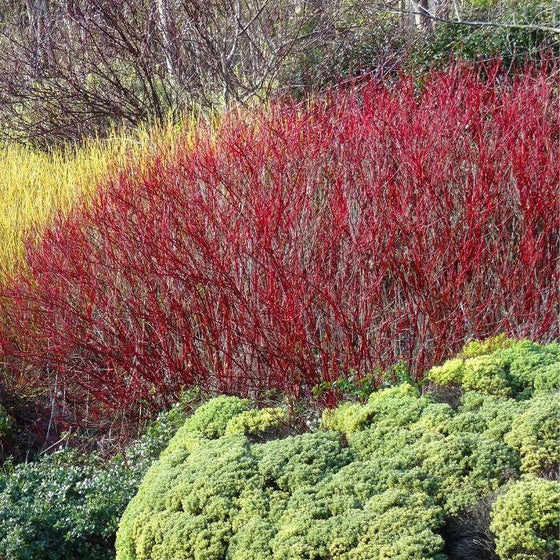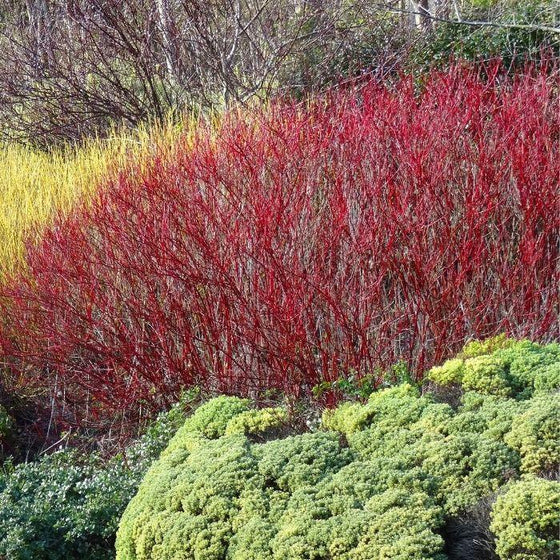Dogwood Red Twig Baileyi 3g
Dogwood Red Twig Baileyi 3g
19 in stock
Full sun and Partial shade
Couldn't load pickup availability
Dogwood Red Twig Baileyi (Cornus sericea 'Baileyi') – 3 Gallon
Description
Dogwood Red Twig Baileyi is a stunning, multi-season deciduous shrub prized for its brilliant red stems that light up the winter landscape. In spring, clusters of creamy white flowers attract pollinators, followed by white berries that birds love. The lush green foliage turns vibrant shades of orange, red, and purple in fall, providing year-round interest. Unlike the species, Baileyi is non-suckering, maintaining a tidy, upright form that grows 6–10 feet tall and wide. Exceptionally hardy and adaptable, this shrub thrives in full sun to part shade and tolerates wet, boggy soils, making it perfect for rain gardens, borders, mass plantings, or as a striking winter accent.
Key Features
- **Botanical Name:** Cornus sericea 'Baileyi'
- **Container Size:** 3 Gallon
- **Mature Size:** 6–10 ft tall and wide
- **Growth Habit:** Upright, multi-stemmed, non-suckering
- **Foliage:** Medium to dark green in summer; orange, red, and purple in fall
- **Bloom Color:** Creamy white, flat-topped clusters in late spring
- **Fruit:** White berries in late summer, loved by birds
- **Stem Color:** Brilliant red in winter
- **Sunlight:** Full sun to part shade (best color in full sun)
- **Soil:** Moist, well-drained to wet; tolerates clay, loam, sand, and poor soils
- **Water Needs:** Average to high; thrives in wet or boggy sites
- **Hardiness Zones:** USDA 2–8 (cold hardy to -40°F)
- **Maintenance:** Low; prune one-third of oldest stems in late winter/early spring for best color
- **Special Features:** Deer resistant, erosion control, rain garden plant, attracts birds and pollinators, four-season interest
Care Instructions
1. **Planting:** Choose a location with moist, well-drained to wet soil. Space plants 6–7 feet apart for hedges or mass plantings.
2. **Watering:** Water regularly during establishment; thrives in consistently moist or even boggy soils.
3. **Pruning:** Prune in late winter or early spring, removing one-third of the oldest stems to ground level to encourage vibrant new growth.
4. **Fertilizing:** Apply a balanced fertilizer in early spring if desired.
5. **Mulching:** Add a 2–3 inch layer of mulch to retain moisture and suppress weeds.
Landscape Uses
- Winter accent or specimen
- Rain gardens and wet sites
- Borders and mass plantings
- Wildlife and pollinator gardens
- Erosion control on slopes or stream banks
-



